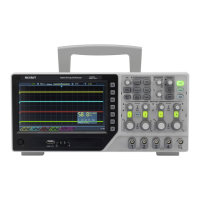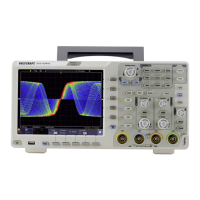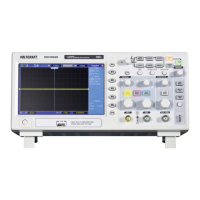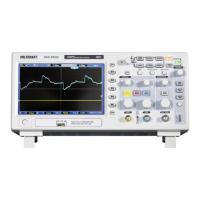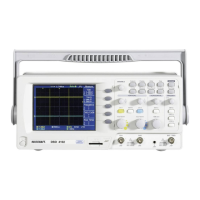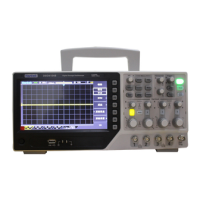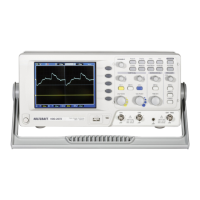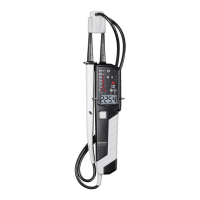4.Advanced User Guidebook
Figure 4-18
Mean: The arithmetic mean over the entire waveform.
PK-PK: Peak-to-Peak Voltage.
RMS: The true Root Mean Square voltage over the entire waveform.
Max: The maximum amplitude. The most positive peak voltage measured over the
entire waveform.
Min: The minimum amplitude. The most negative peak voltage measured over the
entire waveform.
Vtop: Voltage of the waveform's flat top, useful for square/pulse waveforms.
Vbase: Voltage of the waveform's flat base, useful for square/pulse waveforms.
Vamp: Voltage between Vtop and Vbase of a waveform.
OverShoot: Defined as (Vmax-Vtop)/Vamp, useful for square and pulse
waveforms.
PreShoot: Defined as (Vmin-Vbase)/Vamp, useful for square and pulse
waveforms.
Cycle RMS: The true Root Mean Square voltage over the first entire period of the
waveform.
Cursor RMS: The true Root Mean Square voltage over the range of two cursors.
The automatic measurement of time parameters
The oscilloscopes provide time parameters auto-measurements include Period,
Frequency, Rise Time, Fall Time, +D width, -D width, +Duty, -Duty, Delay
A→B , Delay A→B , Screen Duty , Phase A→B
,
and Phase A→B .
Figure 4-19 shows a pulse with some of the time measurement points.
Figure 4-19
Rise Time: Time that the leading edge of the first pulse in the waveform takes to
rise from 10% to 90% of its amplitude.
Fall Time: Time that the falling edge of the first pulse in the waveform takes to
fall from 90% to 10% of its amplitude.

